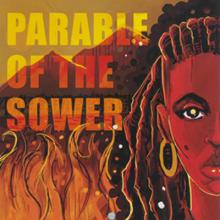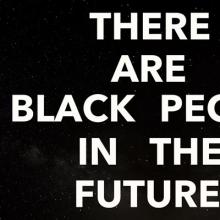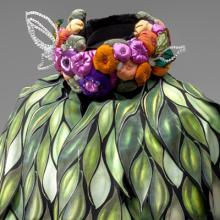Harvey Milk Terminal 1
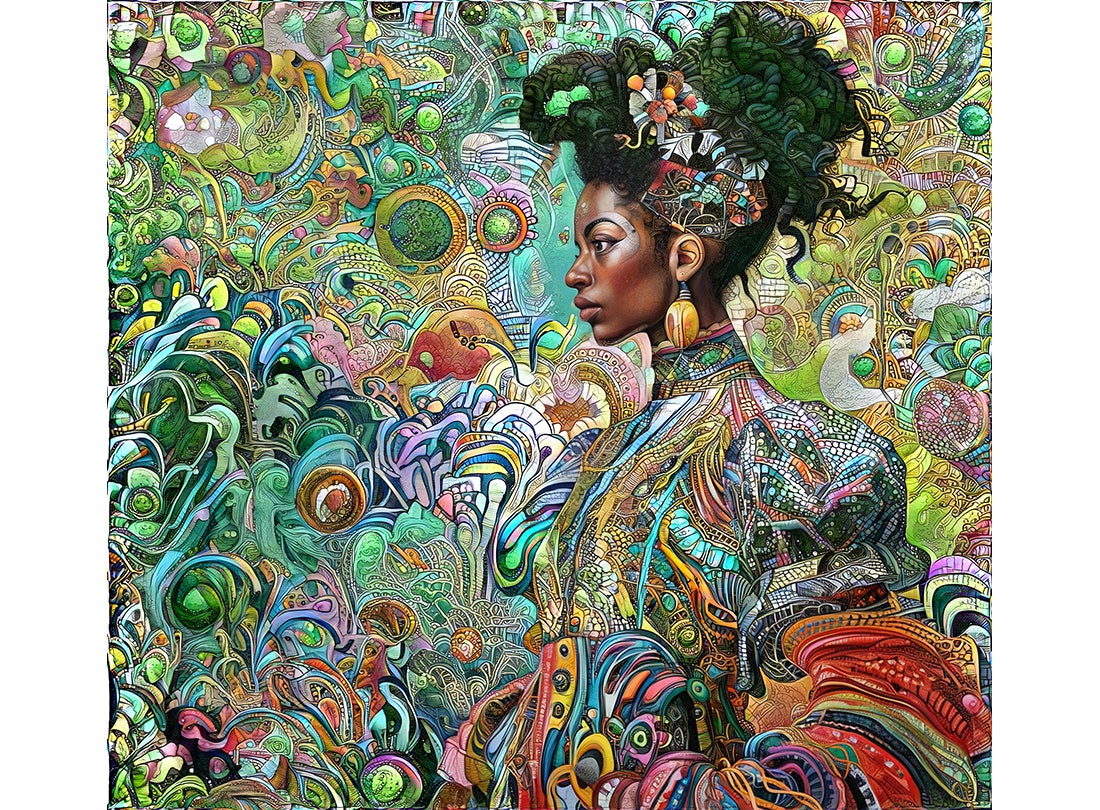
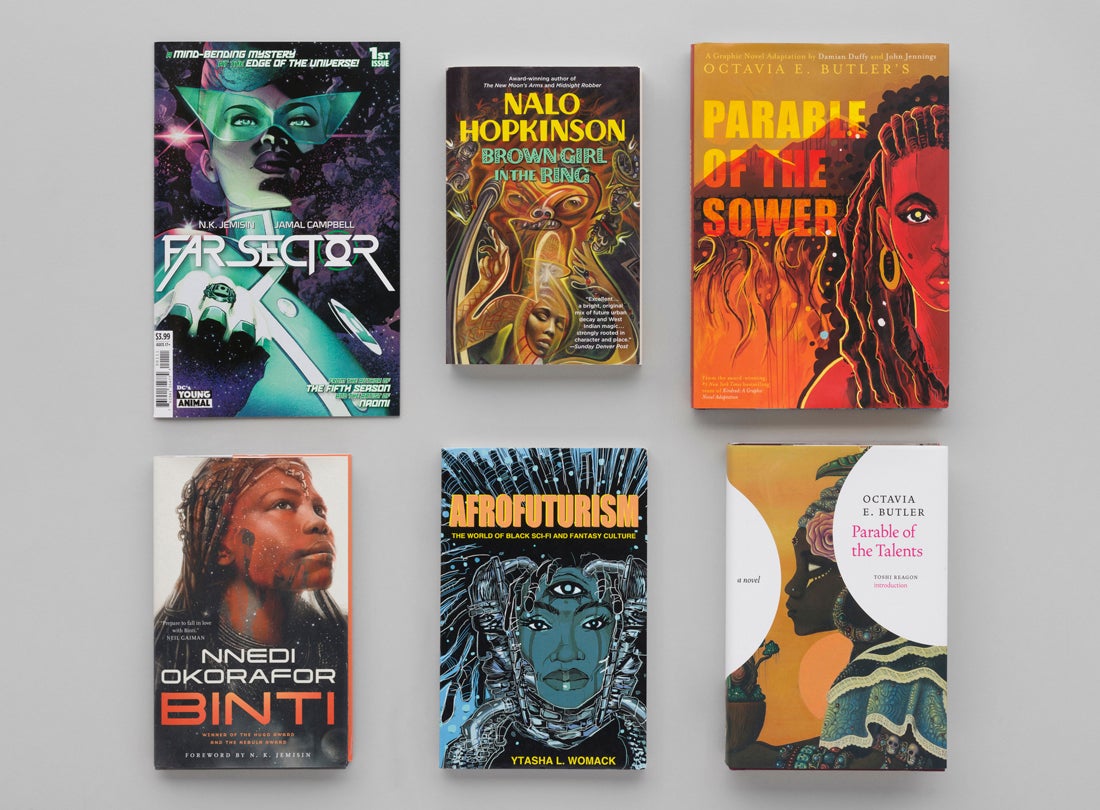
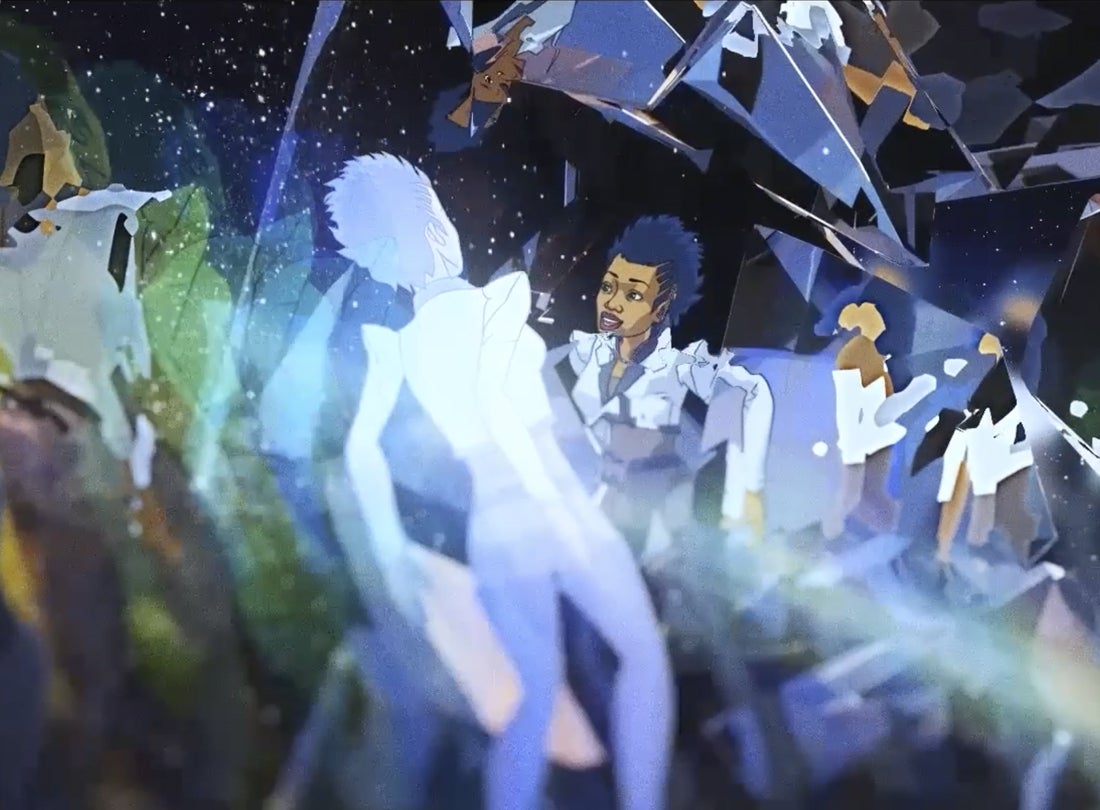
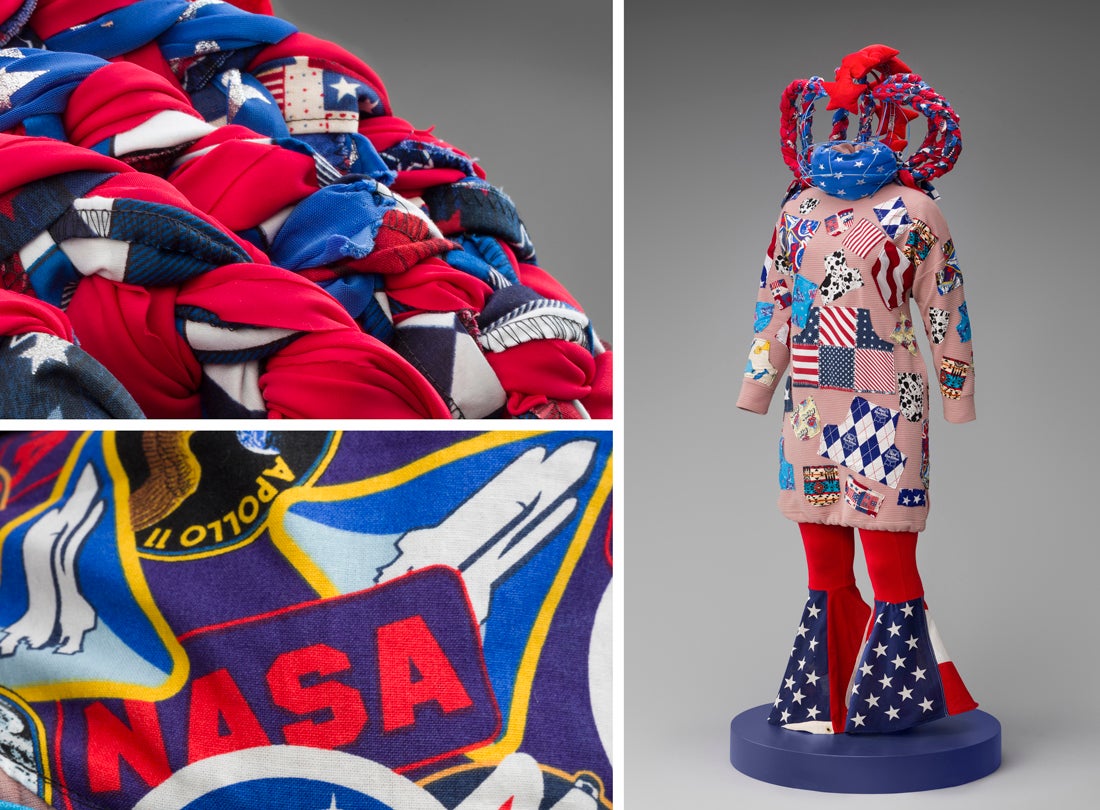
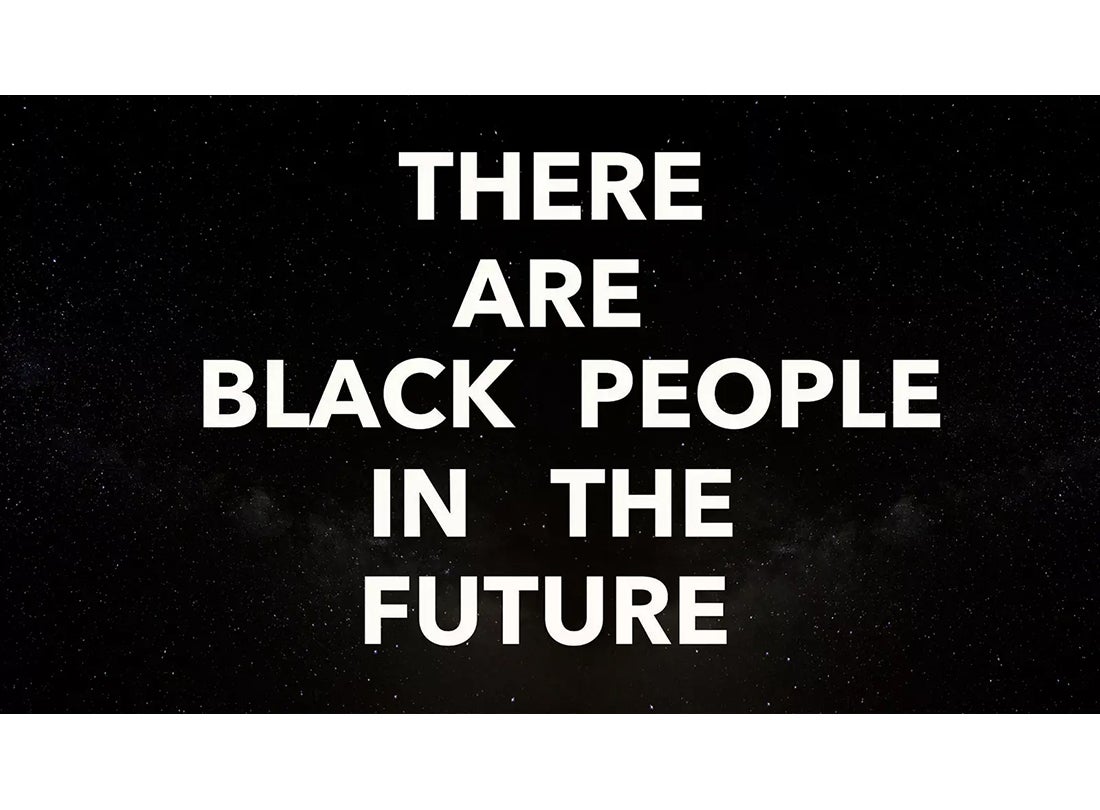
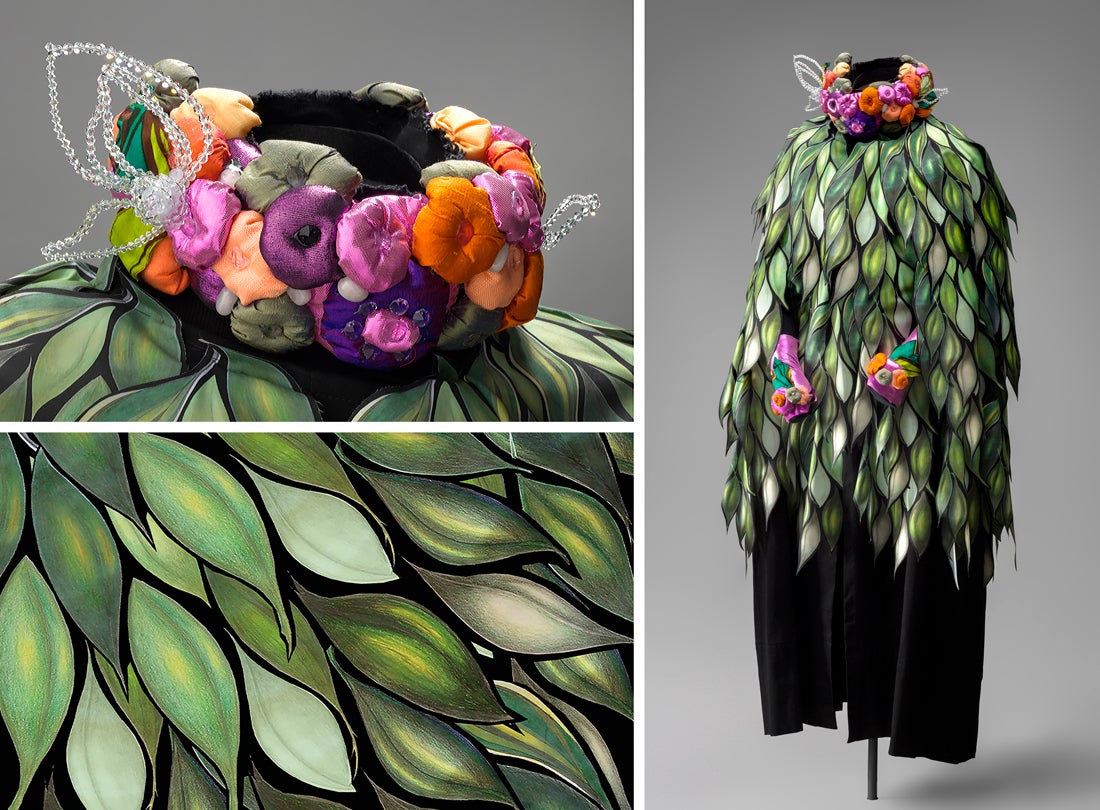
Afro-Surrealist Carnival (series) 2023
Artwork by Nettrice Gaskins (b. 1970)
Tools applied: Generative AI (text-2-image and neural style transfer) and
Adobe Photoshop
Courtesy of the artist
R2025.0204.006
Nettrice Gaskins
Based in Boston, Dr. Nettrice Gaskins is a digital artist, teacher, writer, and STEAM (science, technology, engineering, art, and math) advocate who earned a BFA in Computer Graphics, an MFA in Art and Technology, and a PhD in Digital Media from the Georgia Institute of Technology. Gaskins’ mother worked as a computer programmer/analyst during the 1980s, when few Black women worked in the field. Gaskins is a 2021 Ford Global Fellow and currently the assistant director of the Lesley STEAM Learning Lab at Lesley University. Gaskins’ book, Techno-Vernacular Creativity and Innovation (2021) proposes a novel approach to STEAM learning that engages historically marginalized communities. Gaskins has taught creative artificial intelligence (AI), robotics, multimedia, visual art, and computer science courses.
“Afrofuturism invites us to imagine new possibilities and futures, often by exploring alternative systems and technologies. This aligns with the potential of generative AI that encourages artists to take risks” explains Gaskins. “My work explores human imagination and software algorithms to produce visuals that open new possibilities for creative expression.” As an artist, she embeds her cultural background, art knowledge, and personal experiences into the tools and prompts she uses to generate images. Gaskins believes “what people misunderstand is how the current tools, in the hands of experienced digital artists, can be used to create new artworks...My intention is to go beyond what human hands can do.” In 2021, Gaskins exhibited a portrait series of eleven “Featured Futurists” as part of the Smithsonian’s Futures exhibition. Gaskins’ portraits of Greg Tate and Faith Ringgold have been displayed as outdoor murals at the Museum of Contemporary African Diasporan Arts in Brooklyn, New York.

Nettrice Gaskins Self-Portrait 2021
Artwork by Nettrice Gaskins (b. 1970)
Tools applied: Generative AI (neural style transfer)
Courtesy of the artist
R2025.0204.008
Far Sector No. 1 | N. K. Jemisin 2019
Brown Girl in the Ring | Nalo Hopkinson 1998
Parable of the Sower: A Graphic Novel Adaptation
Octavia E. Butler, adapted by Damian Duffy 2020
Binti | Nnedi Okorafor first published 2015
Afrofuturism: The World of Black Sci-Fi and Fantasy Culture
Ytasha L. Womack 2013
Parable of the Talents | Octavia E. Butler first published 1998
Collection of M.F. Westphal and anonymous lender
L2025.0208.001, .008c-.010; L2025.0208.010; L2025.0201.001,.003
Octavia E. Butler: Mother of Afrofuturism
Octavia E. Butler (1947–2006), the first African American woman science fiction writer to gain national recognition, redefined the genre and penned some of the earliest Afrofuturist novels that featured Black female protagonists. Butler paved the way for Black women writing under the larger umbrella of speculative fiction today, including authors such as N. K. Jemisin, Nnedi Okorafor, Nalo Hopkinson, and Tananarive Due. Butler grew up in Pasadena, California, and spent most of her time in the library. Her mother, a single parent, encouraged her daughter to write by gifting her a typewriter for her eleventh birthday. Butler began submitting stories to science fiction magazines at age thirteen. After attending Pasadena City College, in 1970, she participated in the Clarion Science Fiction Writers’ Workshop in Clarion, Pennsylvania, as the only Black student. Early in Butler’s career, she often awoke at two or three in the morning to write before leaving for work in clerical or factory positions. She published her first novel, Patternmaster, in 1976, which was followed by Mind of My Mind in 1977. By this time, she made her living through writing alone. Butler won both Hugo and Nebula awards for her science fiction and was awarded a MacArthur Fellowship in 1995. In 1993, Butler published Parable of the Sower, arguably her most revered novel, which has influenced countless Black women writers, artists, and filmmakers. The sequel, Parable of the Talents, followed in 1998.

Octavia E. Butler 2024
Artwork by Nettrice Gaskins (b. 1970)
Tools applied: Generative AI (text-2-image and neural style transfer) and
Adobe Photoshop
Courtesy of the artist
R2025.0204.002
Alice Coltrane: Music as Transformation
For composer Alice Coltrane (1937–2007) Afrofuturist interest in alternative realities resonated with the transformative power of music. In 1967, at age twenty-nine, the jazz pianist, organist, harpist, and singer lost her husband and musical partner, renowned saxophonist John Coltrane (1926–67). Left with four children to raise, Alice went on a deep spiritual journey to overcome her grief and consulted with the guru, Swami Satchidananda. In 1971, Alice released Journey in Satchidananda, the first musical manifestation of her spiritual transformation. Soon after, she visited India. She moved to California in the early 1970s, and in 1975, established the Vedantic Center in Woodland Hills. In 1976, she had a revelation and renounced secular life, becoming a swamini, or spiritual teacher, and taking the name Turiyasangitananda, which she translated as the Transcendental Lord’s highest song of bliss. In 1983, Alice founded the Shanti Anantam Ashram (later renamed Sai Anantam Ashram) in Agoura Hills, California. The multi-ethnic and multigenerational ashram served as a sanctuary for many prior to closing in 2017. Music served as the center of Alice’s practice; she brought together diverse styles and cultural traditions. In addition to releasing albums in the 1970s, Alice independently distributed live cassette recordings of devotional hymns. The recordings evoke a soulful, Black gospel sound, reflective of Alice’s upbringing performing in Detroit’s Black churches.
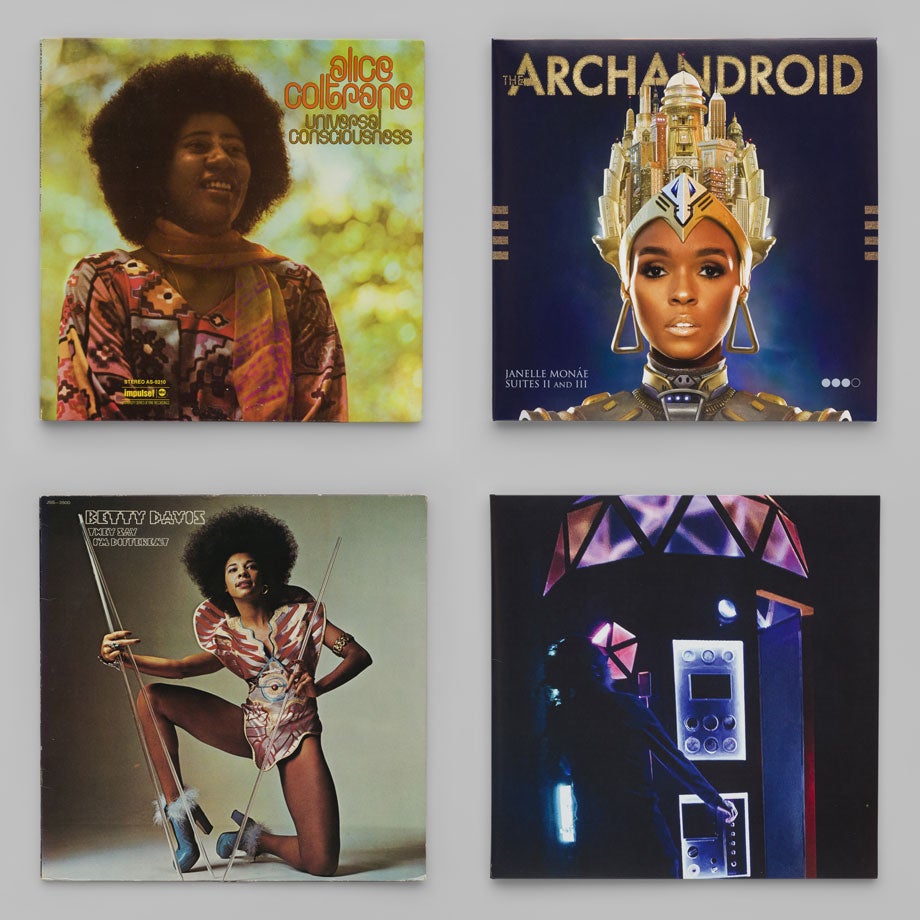
Universal Consciousness | Alice Coltrane 1971
The ArchAndroid | Janelle Monàe 2010
They Say I’m Different | Betty Davis 1974
Circuit City | Moor Mother 2020
Courtesy of Mickey McGowan/Unknown Museum Archives and anonymous lender
L2025.0210.001-.003; L2025.0208.005-.006
Godspeed (Proof of Concept) still 2021
Celia C. Peters
Courtesy of the artist
Celia C. Peters
Oakland-based filmmaker and artist Celia C. Peters has loved science fiction since childhood. Today, she explores unlimited possibilities with characters that look like her—something she rarely saw growing up. Peters’ animated, proof-of-concept short presents a scene from Godspeed, her feature film in development. Godspeed follows a gifted technophile who is forced to step away from her high-powered career when her latest project—a cybernetic device she created—triggers a terrifying breakdown. Peters debuted her first future-forward apparel capsule collection, the Godspeed Collexion, at Oakland Style Week 2024’s Fashion Forward. The pieces in the collection were all inspired by Godspeed’s lead characters.
Peters also works in the medium of digital collage. The lenticular print she created for the exhibition contains three shifting frames and illustrates a powerful, vibrant “afronaut” in the future. The piece builds on a portrait of an unidentified African woman photographed in the early 1900s by an unknown photographer. The print reflects a point Peters once made about the cosmic, iconic nature of Blackness: “The creativity of Black people has the power to move the world.”
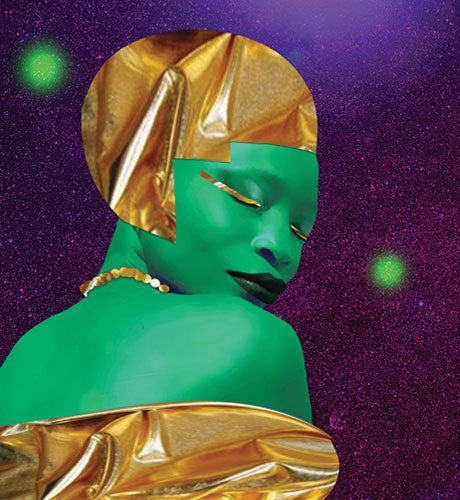
The Blueprint 2024
Celia C. Peters
lenticular print
Courtesy of the artist
R2025.0212.001
America’s Outta Pocket ensemble with space helmet 2023
Afatasi the Artist
fabric
Courtesy of the artist
L2025.0202.003a-c
Afatasi the Artist
“Afatasi” literally means “half of one” in Samoan. “Past injustices have shaped present-day realities, so what does this mean for our futures?” asks Afatasi the Artist. A native San Franciscan and Afro-Polynesian, she explores the past, present, and future of Black people in San Francisco and questions why the Black community is the only dwindling demographic in the city. A welder and metal sculptor, Afatasi is also a self-taught seamstress, fashion and textile designer, and mixed-media conceptual artist. She holds an annual Futurism Fashion Experience during Black History Month in February in San Francisco focusing on themes such as “What Does Being Whole and Repaired Look Like?” She has also held fashion shows in London and Auckland. Afatasi designs wearable art to fit a variety of sizes and many of her garments are unisex. Her art practice takes place at the Shipyard Studios in Hunters Point. She opened the Sunbelt Gallery in the city’s Bayview neighborhood on Third Street—a hyperlocal space to engage in art, culture, and community. Afatasi is also a genealogist who teaches the course “Where’re Yo People’s From?” Chattel slavery in the United States caused the separation of families, erasing enslaved people’s ancestral history. The course allows participants to piece together their family history and reconnect with their roots. In 2024, Afatasi completed the temporary mural Modalities and Motifs, a 500-foot installation on the Southeast Treatment Plant construction fence on Evans Avenue in Bayview.
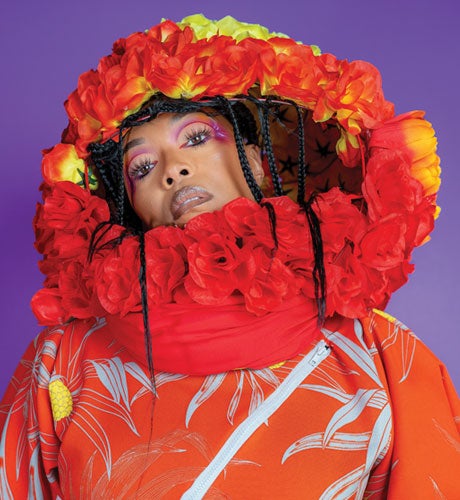
Afatasi the Artist 2024
Photograph © Aaron Garrette | 94SHOTS
R2025.0202.01
THERE ARE BLACK PEOPLE IN THE FUTURE 2025
first billboard 2017
Alisha B. Wormsley
Courtesy of the artist
R2025.0203.001
Alisha B. Wormsley
Based in Pittsburgh, Pennsylvania, interdisciplinary artist Alisha B. Wormsley imagines the future of art, science, and technology through a Black matriarchal lens. She creates works in a variety of mediums that challenge contemporary views of modern American society. Inspired by Afrofuturist artists and writers who champion the need for Black people to claim their place, Wormsley first developed her ongoing project, THERE ARE BLACK PEOPLE IN THE FUTURE, in 2012. She began writing the statement in sketchbooks, tagging it in various places, and stamping it onto artifacts collected from residents in Homewood, a Black community in Pittsburgh. Wormsley then preserved these items in resin for future generations. The project’s affirmation addresses the systemic oppression of Black communities through space and time and reaffirms the presence of Black people: past, present, and future. This statement has appeared in videos, installations, street art, and performances, and most famously, in 2017, when Wormsley placed the powerful words on a billboard in East Liberty, a neighborhood in Pittsburgh experiencing gentrification. Despite community protests, the billboard statement was removed by its owner. Since then, the billboard has been reproduced in Detroit, Charlotte, New York City, Kansas City, and Houston, and internationally in London, Accra, and Doha. THERE ARE BLACK PEOPLE IN THE FUTURE created a movement, and it continues to encourage dialogue and serve as a catalyst in support of Black futures.
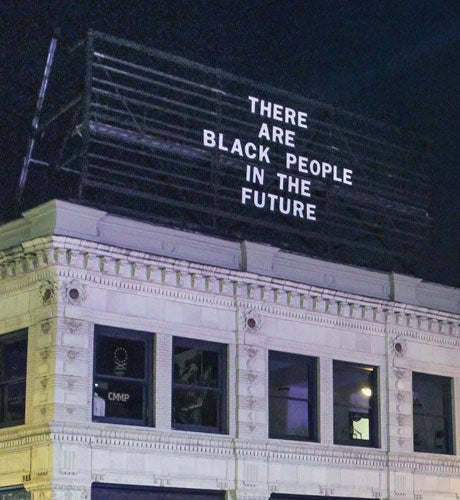
The Last Billboard 2017
Alisha B. Wormsley
Pittsburgh, PA
Photograph courtesy of The Last Billboard
R2025.0203.002
Osanyin Cape with collar and wristlets 2020
D. Denenge Duyst-Akpem
fabric
Courtesy of the artist
L2025.0205.001a-d
D. Denenge Duyst-Akpem
Born and raised in rural Nigeria, D. Denenge Duyst-Akpem is a global traveler, self-described “space sculptor,” and award-winning educator, performance artist, and writer. Her work bridges design, ritual, and ecology. As an Associate Professor, Adjunct at the School of the Art Institute of Chicago, she teaches courses such as Afrofuturity, Take Root Among the Stars: The Legacy of Octavia Butler, and Sculpting Space: Design, Architecture, and Sacred Systems in Africa and the Diaspora.
Denenge’s leaf drawings and portraits, developed as a National Endowment for the Humanities Fellow, led to the 2020 Camo Coat Collection, featured in the Victoria and Albert Museum’s Africa Fashion catalog (2022), among others. In 2023, the Museum of Fine Arts, Boston, acquired Denenge’s Hip Hop Flounce Coat for its permanent collection. The Osanyin Cape, part of this series, is inspired by camouflage in nature and the Yoruba orisa Osanyin, deity of healing and forest wisdom, often depicted as half tree, half human. The Camo Coat’s most recent iteration, CCv2: The Garden Collection, explores healing and protection through textiles and garments, inspired by Octavia Butler’s prophetic novel Parable of the Sower (1993). The story follows the young Lauren Oya Olamina who sets off on foot in 2024 across a dystopian California plagued by the disastrous effects of climate change, with the hope of establishing her new Earthseed community. This leaf garment serves as a stimulus to consider: How does one survive and thrive in the urban environment? How can we reimagine more sustainable and equitable futures for all?

Self-Portrait in Camo Cape 2022
D. Denenge Duyst-Akpem
Pastoral Brutalism Series
La Becque, La Tour-de-Peilz, Switzerland
Courtesy of the artist
R2025.0205.003

